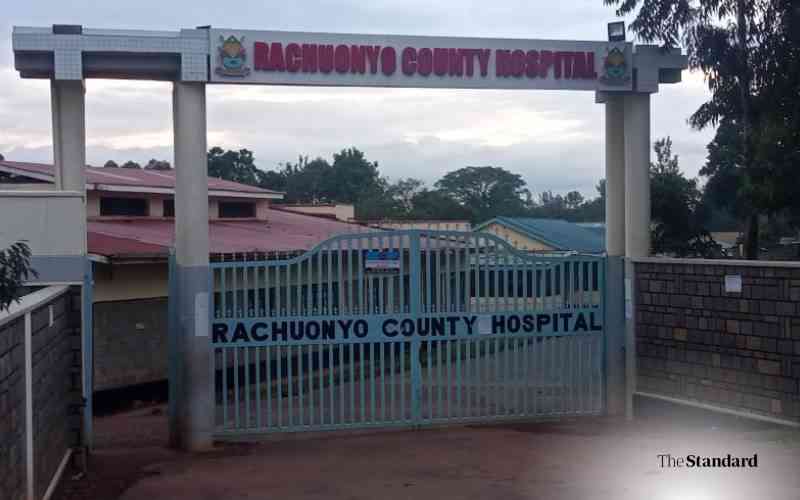Four-year follow-up to a home-visiting intervention to promote early childhood development and prevent family violence in rural Rwanda: the Sugira Muryango cluster randomised trial
Sugira Muryango (SM) is a home-visiting intervention designed to promote early childhood development (ECD) and prevent violence in families with young children living in extreme poverty in rural Rwanda.
We present 4-year follow-up data collected in 2022 in n=1009 households (93%) from a cluster randomised trial. We compare outcomes in SM and usual care (UC) families using mixed-effect models. Results are reported as the average difference in change over time in the SM versus UC group for longitudinal outcomes and the average difference in SM versus UC groups for new outcomes.
Compared with UC caregivers, caregivers who participated in SM report engaging in more stimulating interaction with their children (b=0.531; 95% CI: 0.468, 0.594) and are less likely to report use of harsh discipline (b=−0.189; 95% CI: −0.292, –0.087). The SM caregivers also provide more learning materials (b=0.218; 95% CI: 0.0219, 0.414), language stimulation (b=0.159; 95% CI: 0.080, 0.240), more varied interactions (b=147; 95% CI: 0.030, 0.260), fathers are reported to be more engaged in play (b=0.253; 95% CI: 0.039, 0.467) and SM households have better hygiene practices (b=0.189; 95% CI: 0.052, 0.326) compared with UC households. We do not observe treatment effects on children’s cognitive outcomes, self-regulation or behavioural problems. There is a small negative association between SM and height-for-age (b=−0.038; 95% CI: −0.062, –0.012).
SM resulted in changes in caregivers’ behaviours to support children’s health and development. Despite positive caregiver effects, we did not observe effects on child development or behavioural outcomes. Programme updates may be required to support children’s continued cognitive growth.
The World Bank estimates that 333 million children globally live below the extreme poverty line, set at less than US$2.15 per day.1 Poverty exposes children to a complex web of risks associated with poor mental and physical health, including undernutrition, understimulating environments, poor hygiene, parental stress and family violence that jeopardise early childhood development (ECD).2 Initiatives that address ECD risks faced by children living in poverty are crucial early in life when ongoing social and neurodevelopmental maturation makes children more likely to benefit from intervention. Parenting-focused interventions can effectively engage female and, to some extent, male caregivers in behaviours that promote ECD and prevent violence.3 As such, parenting-focused ECD programmes can improve family functioning and build a strong foundation for children to settle on a healthy developmental trajectory.4 Longitudinal studies have documented the potential lifelong benefits of ECD to children and societies, including increased educational attainment, employment and income.5–7 Strong evidence for long-term effects of ECD comes from longitudinal studies from the USA, namely the Perry Preschool Project8 and the Abecedarian Project.5 Less established are the long-term benefits of ECD interventions in low- and middle-income countries (LMICs) where follow-up studies are rare and vary in quality.9 The longest running longitudinal ECD follow-up study from an LMIC is the Reach-Up intervention in Jamaica. The Reach-Up trial followed 95 children up to 30 years after the intervention ended and showed that children in the psychosocial stimulation group compared with control had benefits that continued to manifest throughout development.7 Positive impacts included higher IQ scores, better school performance and 25% higher wages in adulthood.7 Other studies of medium term (4–9 years) and long-term (10 years +) effects of ECD in LMICs have generated mixed results.9 Medium-term sustainment of positive intervention effects was found in a community health worker delivered home-visiting ECD intervention in Pakistan. This programme focused on responsive stimulation and observed better outcomes among intervention children on scores of IQ, executive functioning, preacademic skills and prosocial behaviours up to 2 years after the intervention, when children were 4 years old.10 An ECD programme in Uganda found sustained effects 2 years postintervention on measures of cognitive, language and motor development in 3 year-old children.11 Finally, an ECD programme in India found sustained effects of a parenting intervention on child cognition and school readiness 15 months after the programme ended when children were 4 years old.12 Other programme have failed to document sustained effects beyond the first year.13 14
While ECD programmes have generally been found to be effective,4 a reason some follow-up studies are unable to detect medium and long-term effects could be that some designs have been underpowered to detect long-term effects that tend to be modest in magnitude. For example, a review of 102 ECD-focused randomised controlled trials found sample sizes ranging from 32 to 3202 individuals.4 In this paper, we examine the medium-term effects of Sugira Muryango (SM), an evidence-based home-visiting intervention to promote ECD and prevent violence in poor families in rural Rwanda.15 We test two hypotheses: (1) SM families will continue to have better outcomes on caregiver behaviours that support healthy physical and mental child development. This includes more frequent engagement in nurturing and playful parent-child interactions, male engagement in childcare, reduced use of harsh discipline, reduced intimate partner violence and more continued engagement in good hygiene behaviours in SM compared with usual care (UC) families; (2) children in SM families will do better than UC children on new outcomes that have become relevant as the children have aged, including outcomes related to higher level cognition and executive functions, self-regulation and emerging behavioural problems. While we previously observed effects of SM on children’s parent-reported developmental outcomes but not on direct observation, we provide two hypotheses for why we may see a delay of cognitive impacts. One is that cognitive development is driven by incremental learning and neurological maturation that continues well into adolescence. Developmental differences following risk exposures and interventions may not emerge until children reach certain milestones due to an incremental accumulation of sequential developmental milestones achieved as children age.16 Indeed, previous studies in LMICs have found that the effects of early life risk exposures related to poverty, low stimulation and infections appear to be more pronounced in mid-childhood compared with infancy.17 18 Second, tools used to assess developmental milestones in children typically capture more variation in outcomes in older children because of the wider range in performance metrics on more sophisticated assessments.16 Based on this, we believe that it is possible that while no performance differences were observed at the 1-year follow-up, differences may emerge as children age.
We add to two previous effectiveness studies of SM from immediate postintervention and a 1-year follow-up from the intervention, which linked SM participation to improved home environments, increased caregiver engagement in stimulating activities and play, increased father engagement, increased dietary diversity, improved hygiene practices and reduced familial violence postintervention.15 Most effects were sustained 1 year after the intervention ended, where we also observed SM effects on children’s parent-reported developmental outcomes (the Ages and Stages Questionnaire), but not on observed developmental assessments (the Malawi Development Assessment Tool).19 Well-powered studies examining the long-term effects of ECD programme effects are important because studies limited to short follow-up periods may underestimate the full benefits of early ECD.
SM is an evidence-based family-strengthening intervention. As implemented in 2018–2019, the programme targeted families with children aged 6–36 months. It was delivered by trained community lay-workers via home visiting unless adaptations were necessary due to illness or lack of privacy. The lay worker uses active coaching to promote nurturing care practices, father engagement and strategies to prevent violence. The SM curriculum is grounded in the Nurturing Care Framework for ECD20 and addresses known risk factors for poor child development among families in extreme poverty and postconflict settings. The components, listed in the theory of change (figure 1), cover responsive parenting, father engagement, shared decision-making, improved nutrition, good hygiene, problem-solving, emotion regulation, conflict resolution and alternatives to harsh punishment. The curriculum spans 12 modules, usually delivered over 12 consecutive weeks and followed by booster sessions 3 months and 6 months post intervention. Each module lasts 60–90 min and includes a 15-minute play interaction with active coaching to engage male and female caregivers. The manual and materials were developed with input from local and international ECD experts, Rwandan government partners and community advisory boards. They included local drawings and references to Rwandan culture using songs and proverbs to help low-literacy families internalise the content. The hypothesis behind SM is that caregiver behaviour changes will positively impact children’s long-term developmental trajectories, as illustrated in figure 1.
Sugira Muryango theory of change.
The effectiveness of SM was tested in a cluster randomised trial (CRT) conducted in 2018–2019 in three Rwandan districts where a cash-for-work programme (‘Vision Umurenge Programme’ (VUP)) was offered by the Government of Rwanda. Families were eligible for inclusion if they (1) belonged to the most extreme level of poverty in the government’s household income categorisation system as determined by eligibility for the VUP (cash-for-work) programme; (2) had at least one child 6–36 months; and (3) were willing to participate in a home-visiting intervention. Both the SM and UC groups received UC provided under VUP, including health and financial services provided by the Rwandan government and its partners.15 19
At baseline, the CRT enrolled n=1049 households, n=1084 children, n=1049 primary caregivers and n=449 secondary caregivers. During the current follow-up, field teams traced n=981 (93.5%) households, defined as the current home of the CRT-eligible child. We re-enrolled n=1009 (93.1%) of the CRT children, n=827 (78.8%) of the CRT primary caregivers and n=331 (73.1%) of the CRT secondary caregivers. If the primary caregiver had changed (n=154), we enrolled a new primary caregiver (defined as the current caregiver who knows the child best). Caregivers re-consented, or consented (in case of new caregivers), when they were enrolled in the 4-year follow-up study. The caregivers also consented for children to participate, and children above 4 years were asked for assent using age-appropriate assent forms. Although new caregivers were not randomised or received the SM intervention in the CRT, they were included in the analysis under an intention-to-treat (ITT) approach to reduce bias associated with dropping randomised families. A variable indicating a caregiver change was included in the statistical models. Reasons for loss to follow-up are shown in the CONSORT diagram (figure 2). All households received a stipend for participating (5000 Rwandan Francs).
CONSORT diagram. 1Clusters had to include ≥10 ePW households to be eligible as an ePW cluster. 2Clusters had to include ≥30 cPW households to be eligible as a cPW cluster. Randomisation within strata of the public works sector did not necessarily guarantee even numbers in the treatment and control arms. cPW, classic public works; ePW, expanded public works.
Assignment to the treatment (SM) and UC conditions occurred at the cluster level within strata defined by VUP programme type (‘classic public works’ (cPW); ‘expanded public works’ (ePW); combined public works (cPW/ePW)). Families’ participation in cPW versus ePW was determined by regional and governmental policies, not the researchers. Geographically defined clusters were established as non-overlapping areas of one or more villages, with each cluster including at least 30 families eligible for cPW or at least 10 families eligible for ePW. Due to the limited rollout of the ePW programme at the start of the CRT, clusters with at least 10 ePW families were included. Within clusters, households were identified to be as close as possible to each other and as distal as possible to other clusters to optimise intervention delivery and limit risk of contamination. After the identification of eligible households and the random selection of households for the formation of clusters, randomisation of clusters to SM or UC conditions was performed, stratifying by VUP programme and geographical sector. After randomisation, families were invited to participate in the study. Clusters were retained if at least five families in the cPW strata or one family in the less available ePW strata were enrolled. After randomisation and enrolment, 48 ePW-only clusters, 38 ePW/cPW clusters and 112 cPW-only clusters were retained. Further details on power calculations, stratification, randomisation and the characteristics of the VUP programme can be found in previous publications.15 19
Following the CRT, SM was expanded in 2021–2022 to be offered to all eligible families in the districts served by the CRT. Some CRT families became eligible for the new rollout of SM because their CRT child or a new child was in the eligible age range. Among households in this follow-up study, of the n=479 CRT households originally randomised to UC, n=116 (24.22%) received SM during the expansion implementation. Of the n=502 households randomised to treatment, n=125 (24.90%) received SM again during the expansion. The analyses presented here use an ITT approach where the treatment variable represents the original treatment allocation. However, a binary indicator was included to account for the potential effects of receiving SM via the expansion implementation.
The CRT collected data in January 2018 (baseline), September 2018 (postintervention) and August 2019 (1-year follow-up). The 4-year follow-up data were collected in June 2022. In the previous three waves of data collection, caregivers responded to the same survey and children underwent the same assessments at each timepoint. At the 4-year follow-up, we repeated many of the previous measures to test hypotheses of sustained effects. We changed certain measures if better tools had emerged or if a more age-appropriate version of a tool was available, as explained below. New measures were selected based on extensive literature reviews and piloted before data collection to assess cultural appropriateness and, where applicable, measure inter-rater reliability. Translation of new tools followed the same rigorous protocols as previous waves.15 The internal consistency of survey-derived scales was evaluated using item-level statistics and instrument-level reliability statistics, such as Cronbach’s alpha. Alpha ≥0.7 was considered indicative of strong internal consistency. Local experts fluent in Kinyarwanda were consulted when editing surveys to improve content validity. Data collection was done by trained Kinyarwanda-speaking enumerators working for an independent research firm. Enumerators were blind to participants’ intervention status. Interviews with caregivers took place at households or other private locations. Assessments of children were done in private rooms at central locations such as cell and sector offices or churches. In the following sections, tools are organised by the respondent and whether the tool was repeated (ie, collected at all four waves) or changed/added.
Stimulating play
Caregivers’ engagement in stimulating activities with the child during the last 3 days was assessed using items from the Multiple Indicator Cluster Surveys (MICS) verion 5.21 Activities included reading or generating a story from books (most caregivers had low literacy), telling stories, singing, taking the child out for a walk, playing with the child, naming, counting or drawing with the child. Activities by ‘any’ caregiver (mother, father or other) were summed (maximum 6; Cronbach’s α=0·74).
Harsh discipline
Discipline practices were assessed as a binary variable using items from MICS-521 to combine any physical aggression (child being shaken, slapped or beaten) or any psychological aggression (child being insulted, shouted or screamed). We also modelled physical and psychological aggression as separate binary variables.
Hygiene
Hygiene behaviours were assessed using items from the Demographic and Health Surveys (DHS) water, sanitation and hygiene module,22 namely, access to clean water, safe water treatment and access to a hand-washing facility with soap.
The home environment
Stimulation and support provided by caregivers was assessed using an abbreviated version of the early childhood Home Observation for Measurement of the Environment (HOME) inventory (Cronbach’s α=0.66). We included 55 items that were selected during a pilot study prior to data collection. Items that were deemed contextually inappropriate during piloting were omitted. Each item receives a binary score based on caregiver report, direct observation or a combination. We calculated a total HOME score and six subscale scores representing the physical environment, language stimulation, responsivity, modelling, variety and acceptance. Because the CRT used the infant/toddler HOME, we treated HOME scores as new outcomes but controlled for baseline HOME scores.
Father engagement
We examined engagement by fathers in the above-mentioned six stimulating activities to examine father engagement in play.
Anthropometrics
Children’s height and weight were measured using height boards and scales purchased in the USA. The scales were calibrated several times each day using weighted bags. If repeated measurements differed, the team checked the equipment and changed batteries if needed. Height was measured in cm to the nearest 0.1 cm. Weight was measured in kilograms to the nearest 1 g. Standardised scores for children’s height-for-age and weight-for-age were calculated using WHO Anthro Survey Analyser software.23
Kaufman Assessment Battery for Children-2
Children’s cognition and domains of executive functions were assessed using subscales from Kaufman Assessment Battery for Children-2 (KABC-2)24: visual processing (conceptual thinking, triangles), short-term memory (numbers recall, hands movement) and long-term storage and retrieval (Atlantis). Scoring was done following the manual. KABC-2 has previously been validated in sub-Saharan Africa including Zimbabwe.25 Scores were treated as new outcomes, but analyses were controlled for baseline child development scores on the Ages and Stages Questionnaire III.
Self-regulation
the preschool self-regulation scale is an observation-based tool to assess children’s self-regulation behaviours (eg, ability to concentrate on tasks, alertness and cooperation) a ‘pencil tap’ and ‘toy play and return’ task.26 the 28 items were summed to create a self-regulation score (Cronbach’s α=0.93).
Behaviour problems
Child behaviour problems were assessed using an abbreviated version of the Child Behaviour Checklist,27 which we adapted for the context during the pilot. Total internalising problems were calculated using items from four subscales: anxious, depressed, emotionally reactive and withdrawn (Cronbach’s α=0.82). Total externalising problems were calculated using items from two subscales: aggressive behaviour and attention problems (Cronbach’s α=0.87). Somatic complaints were treated as a separate subscale (Cronbach’s α=0.71).
Victimisation of intimate partner violence
Intimate partner violence (IPV) among caregivers who were currently married, cohabitating or in a relationship was assessed using items from the Rwandan DHS Domestic Violence Module, 2020. Items addressed three types of domestic violence, namely emotional, physical and sexual abuse by an intimate partner within the last 3 months. We created a binary variable for any victimisation across each domain. The items had changed from the previous data collection due to changes to the DHS module used in Rwanda, and variables were treated as new outcomes.28
Analyses were conducted using an ITT approach using mixed-effects models. Continuous outcomes were analysed using linear mixed-effect models with an identity link function and restricted maximum likelihood, binary outcomes were analysed using generalised linear mixed-effect models with a logit link function, and count outcomes were analysed using mixed-effect negative binomial models with a log link function. Estimates for continuous outcomes are reported as unstandardised regression coefficients. Estimates for binary and count outcomes are reported as ORs and incident rate ratios (IRR), respectively. Single timepoint models (new outcomes) include two levels of nesting, individuals/households nested within randomisation clusters, and treatment effects are evaluated by looking at the treatment parameter, which reflects differences between SM and UC groups at the 4-year follow-up. Repeated measures are examined in longitudinal models with three levels of nesting: individuals/households nested within measurement waves and measurement waves nested within randomisation clusters. Treatment effects in the longitudinal models are evaluated by looking at the treatment-by-timepoint interaction parameter, representing the average difference in the rate of change (slope) between the SM and UC groups across all the timepoints. A significant parameter indicates that the slopes are statistically different between the two groups. The average change over time estimate represents a simple way to summarise the average effects across the entire study timeline. Yet, to compare changes from baseline to the follow-up only, we also provide baseline to 4-year follow-up marginal difference estimates (i.e., differences in the changes in outcomes between SM and UC groups). We acknowledge the possibility that the marginal effect estimates may show slight deviations from the ‘average change over time’ because they provide specific information for 4-year follow-up results relative to baseline. Treatment effects on new outcomes are examined as the average differences at the 4-year follow-up. Results, including point estimates, 95% CIs, p-values and OR for binary outcomes or IRR for non-normally distributed count models are reported. Covariates are listed below. Tables with the parameters for all variables included in the models, raw means, proportions and SDs, as well as numbers needed to treat as absolute effect size for binary outcomes (from observed data) can be found in the online supplemental tables S1–S11.
Covariates
All models controlled for the age and sex of the participants, a binary variable for participation in the SM expansion project (yes/no) and a binary indicator for primary caregiver change. We also controlled for possible participation in other programmes because families may have been offered other services that impact similar outcomes during the gap between the CRT and the follow-up. We accounted reported participation in parenting groups, community kitchens and saving groups. Finally, because the COVID-19 pandemic occurred between the CRT and the follow-up, we controlled for the economic impact of the pandemic on families using a summed COVID-19 impact score based on a 9-item scale assessing pandemic-related hardships such as loss of income, difficulties caring for children and difficulties accessing food and paying for bills. This COVID-19 impact score was included, given the widely documented impact of stay-at-home policies and quarantines on families.29 Regression models that excluded the COVID-19 impact variables is provided in online supplemental tables S12 and S13.
Table 1 provides sample descriptives. The mean age of caregivers was 41.81 years (SD=10.98), 67.53% were women and the majority (82.26%) were biological parents. The mean child age was 5.86 years (SD: 0.7, range: 4–7 years) and 49.55% were women.
The mean COVID-19 impact score was 6.83 (SD=2.58). 65% of households reported ‘extreme stress’ because of the economic impact of the pandemic, 75% reported losing partial or full income, and 86% and 78% reported being unable to afford food and rent/utilities, respectively. When asked how the pandemic impacted caring for children and vulnerable household members, 77% of participants said caregiving has gotten ‘somewhat more difficult’ or ‘a lot more difficult’.
Results are organised by the three levels of respondents: household, child and caregiver. We first describe repeated outcomes where ‘b’ refers to the regression coefficient for the time-by-treatment interaction representing group-level differences in change over time (table 2). We then describe new outcomes where ‘b’ refers to the treatment effect representing the group difference (table 3).
Longitudinal models of change over time across all four timepoints and marginal difference estimation for repeated outcomes
Result for new outcomes only assessed at the 4-year follow-up visit
Sustainment of intervention effects is observed across several home-environment and parenting outcomes. Using the MICS items on caregiver engagement in playful stimulation, we see improvements by 0.531 points on stimulating play activities in SM (b=0.531; 95% CI: 0.468, 0.594; p<0.001; d=0.177) compared with UC households in the average change across all four time points. The marginal effects reflecting change from baseline to the 4-year follow-up are also significant (b=1.070; 95% CI: 0.804,1.336; p<0.001; d=0.362). We see a sustained effect on reduced harsh discipline towards children. Examining average change over time, we find that children in SM families had lower chances of being exposed to any violent discipline (b=−0.189, 95% CI: −0.292, –0.087, p<0.001; OR=0.827), any physical discipline (b=−0.172, 95% CI: −0.278, –0.066, p<0.001; OR=0.842) and any psychological aggression (b=−0.286, 95% CI: −0.396, –0.175, p<0.001; OR=0.751) compared with UC households. Yet, when looking specifically at differences between baseline and the 4-year follow-up, we find only psychological abuse shows greater marginal effect in intervention households compared with control (b=−0.072, 95% CI: −0.136, –0.018, p=0.009; OR=0.931). Concerning hygiene and safety, the average change over time suggests that SM families had become more likely to treat their water (b=0.189, 95% CI: 0.052, 0.326; p=0.006; OR=1.208) and marginally more likely to use a clean water source (b=0.189, 95% CI: −0.008, 0.404; p=0.059; OR=1.219) than UC families. There was no intervention effect on having a handwashing facility with soap. Looking at the marginal effects, only treatment of drinking water was significant (b=0.115, 95% CI: 0.044, 0.186, p=0.001; OR=1.122). Regarding new outcomes, SM families provided access to a larger number of learning materials compared with UC (b=0.218, 95% CI: 0.0219, 0.414, p=0.029; IRR=1.288). Specifically, SM households were more likely to have drawing materials (b=0.354, 95% CI: 0.048, 0.659, p=0.023; OR=1.423) and number materials (b=0.456, 95% CI: 0.119, 0.792, p=0.008; OR=1.577). We did not see a significant difference in the total HOME score, but did find that SM households compared with UC scored higher on the language (b=0.159; 95% CI: 0.080, 0.240, p<0.001; d=0.125) and the variety (b=0.147; 95% CI=0.030,0.260, p=0.011; d=0.164) subscales. Fathers in SM households were also on average engaged in more stimulating activities compared with UC (b=0.253; 95% CI: 0.039, 0.467; p=0.020; IRR=1.288).
Like the post-intervention and 1-year follow-up, we did not see significant differences in change in weight-for-age. Surprisingly, we did see a small but significantly greater reduction in length-for-age over time in SM children compared with UC (b=−0.038; 95% CI: −0.07, –0.02; p=0.004; d=-0.018). We did not see significant differences in cognitive development, self-regulation or behaviour problems.
We did not see significant differences in victimisation to IPV among female caregivers in SM compared with UC.
Since the psychosocial and economic impact of the COVID-19 pandemic on CRT families was profound, understanding the impact of the pandemic on study outcomes may provide an important context for interpreting results. Here, we highlight only the significant associations between the COVID-19 impact score and outcomes to aid the discussion below. All parameters can be found in the online supplemental tables. For family-level outcomes, there was a significant negative association of COVID-19 hardships with caregiver engagement in stimulating activities (b=−0.052, 95% CI: −0.09, –0.03, p=0.001). However, on the HOME scales, there was a positive association of COVID-19 hardship with the variety subscale score (b=0.026, 95% CI: 0.01, 0.04, p=0.005). For child-level outcomes, there was a significant negative association of COVID-19 hardship with weight-for-age z-score (b=−0.015, 95% CI:−0.03, –0.01, p=0.002) and positive associations with somatic complaints in young children (b=0.045, 95% CI: 0.00, 0.09, p=0.042) and internalising symptoms in older children (b=0.175, 95% CI: 0.05, 0.30, p=0.005). Where were no associations of COVID-19 hardships with caregiver-level outcomes.
Previous results from the SM CRT showed that participation in SM predicted increased caregiver engagement in stimulating activities and play, increased father engagement, increased dietary diversity, hygiene practices and reduced familial violence postintervention.15 Many effects showed sustainment 1 year postintervention, where we also found greater improvement in parent-reported developmental milestones in SM children compared with UC, but no differences in observed child development outcomes.19 Here, we show sustained differences between SM and UC households on a range of caregiver behaviours including engagement in stimulating activities, male caregiver engagement, provision of learning materials, improved hygiene practices and reduced use of harsh discipline on children even 4 years after SM ended. These results show the promise of a brief ECD intervention in creating sustainable change to improve children’s environments. Parental engagement in stimulating care activities is a well-established predictor of children’s cognitive and educational achievement30 and has been shown to mediate intervention effects on child outcomes.31 32 The SM theory of change therefore proposed that improved home environments and stimulation of children will lead to better child outcomes over time as children benefit from more optimised learning opportunities within the home. We were unable to support this hypothesis as SM children did not perform better than UC children on measures of cognition, self-regulation or behavioural problems. We propose three explanations for the absence of effects, namely: (1) child-level effects need more time before they emerge; (2) SM needs more content for caregivers to learn how to increase the complexity of their interactions with children older than 3 years; (3) COVID-19-related impacts on family life may have affected child outcomes, possibly overriding positive effects of SM. The first proposed explanation builds on the idea that children may need to spend more time in an optimised environment or develop more advanced mental skills before differences start to emerge. While a large body of work supports the importance of experiences in the first 3 years of life in shaping neurodevelopmental growth, effects of environmental exposures are sometimes not visible until later.17 30 The second explanation suggests that caregivers learnt interactions that were presented during coaching, but SM may need to teach caregivers how to match their interactions to the child’s increasing level of mastery as they reach new milestones. It is worth noting that the CRT recruited vulnerable families where 23% of caregivers reported no formal education and 42% were illiterate. Future iterations of SM may improve techniques to support caregivers who are illiterate to provide verbal stimulation and scaffolding that supports verbal development and early reading skills. Such programmes have been developed and tested in higher resource settings. Regarding the third explanation, we note that the absence of effects on child cognition, behavioural well-being and anthropometric growth may be partially explained by the profound challenges families faced during the COVID-19 pandemic. The pandemic exposed and exacerbated existing vulnerabilities within societies. Like many countries, Rwanda implemented measures to curb the spread of COVID-19 including lockdowns, curfews, school and business closures, travel restrictions and social distancing mandates. While protecting public health, such measures had far-reaching socioeconomic ramifications that disproportionately affected vulnerable communities that lacked resources to sustain economic shocks. Several studies have shown that familial violence, including harsh discipline and IPV, increased during the pandemic.33–36 Parental stress is a well-known predictor of familial violence,37 and we have previously shown that stress stemming from daily hardship predicted higher use of harsh discipline and IPV in CRT families.19 At the systemic level, the COVID-19 pandemic compromised the ability of protection systems to detect and respond to violence due to the closures of health services. SM was designed to facilitate navigation of formal and non-formal support, but under the COVID-19 pandemic, interruptions to these resources may have interrupted previously obtained access to services. 38The impacts of the COVID-19 pandemic on family dynamics may help to explain why we did not replicate the previously shown reductions in female caregiver victimisation to IPV.15 19 Yet, this sustainment may also reflect a gradual fading of SM’s immediate impact and a need for additional violence prevention programming. SM aims to create change in caregiver behaviours, but to create sustainable changes in violent behaviours towards women, SM may require further engagement with the community to impact social norms. Strategies to address social norms at the community level may include working with community leaders and using campaigns to change attitudes. Rwanda has made great strides towards reducing family violence through community measures, such as introducing a ‘Friends of the Family’ volunteer workforce and creating One-Stop Centres to support survivors of IPV, and such services may need better integration within SM.
To account for the potential impact of social and economic shock stemming from the pandemic, all analyses accounted for COVID-19 economic impact. Although we did not see SM effects on emerging behavioural problems, we noted a positive association between COVID-19 hardship and somatic complaints in young children and internalising symptoms in older children. This may support the notion that CRT children were emotionally impacted by family-level hardship stemming from the pandemic. We also saw a negative association between COVID-19 hardships and child weight-for-age. This may reflect the impact of economic stress on the caregiver’s ability to provide nutritious food. We did not see an association between children’s cognitive outcomes and pandemic-related hardship. This may reflect that children’s emotional well-being and physical growth are sensitive to acute stress, while cognitive development may be impacted by chronic exposures. As mentioned above, the literature on medium and long-term effects of ECD interventions in LMICs is limited and has generated mixed results. The Reach Up programme in Jamaica, which has shown impressive long-lasting effects, was a particularly intense programme, involving weekly sessions for 2 years.7 9 SM is less intense, involving only 14 sessions. More work is needed to unpack possible implementation-related effect moderators of ECD, which may include the age of the child, the length and intensity of the programme, the qualifications and training of the workforce delivering and overseeing programme implementation, the mode of delivery (home-based, group session, online), the quality of the delivery (fidelity and competence of the workforce) and the vulnerability of the population including access to services. To do this work, researchers will need to more consistently report on implementation characteristics. A recent meta-analysis found that only a few ECD studies examine how implementation characteristics moderate effects.39 A limitation of the current study is that although we included observed outcomes related to parent-child interactions, the home environment and child development outcomes, several outcomes were based on parent-report which introduces the possibility of reporter bias.
Results demonstrate the ability of relatively low-intensity home-visiting ECD and violence prevention interventions to create lasting impact on caregiver behaviours that shape the environment and academic opportunities of young children. Four years after participating in SM, caregivers engaged in a wide range of behaviours that support children’s healthy and prosperous development. For example, SM caregivers still provided a more stimulating home environment (eg, play, learning materials), engaged in less harsh discipline and fathers were more engaged in play compared with UC. SM households were also more likely to treat their drinking water. The lack of sustained effects on victimisation of female caregivers may be a reminder of challenges in creating sustainable change in such behaviours in times of economic and social stress. The lack of effects on children’s cognitive development and emerging behaviour problems may suggest that the modules addressing responsive care can be improved and that SM needs extra content to promote children’s cognitive and emotional health development and health and to address changes in children’s development needs as children age. Such content may include teaching parents how to help children use stress and emotion regulation strategies. While this study was conducted in Rwanda, we believe findings are relevant to similar settings with high poverty known to affect hundreds of millions of children worldwide.
Design of the intervention was carried out with input and routine consultation from stakeholders at the Ministry of Gender and Family Promotion and the National Child Development Agency in Rwanda. We engaged with village leaders and the Ministry of Local Government prior to and during the study implementation to discuss recruitment of participants and to inform them of the process and outcomes. During implementation and data collection, we worked closely with our field-based implementation partner, FXB-Rwanda, who provided training and supervision to the community-based coaches to discuss ongoing implementation and emerging issues.
Representatives from the data collection firm, Laterite, and our collaborators at the University of Rwanda were closely involved in developing, piloting and refining the research questions, study design, selection of measures and assessment tools and procedures. At the end of the 1-year and 4-year follow-up studies, we communicated results at a local dissemination event which included all key stakeholders, including the Government of Rwanda and other organisations that implement child development programmes in Rwanda. The event included a facilitated discussion with programme stakeholders, including local government officials and study interventionists, as well as a presentation, led by the principal investigator, on programme outcomes, lessons learned and next steps.
Data availability statement
Data are available upon reasonable request. Deidentified data from the original CRT are available in the World Bank data micro catalogue (https://microdata.worldbank.org/index.php/catalog/6107). Deidentified data from the 4-year follow-up study can be made available upon request.
Ethics statements
Not applicable.
This study involves human participants and ethical approval was obtained from the institutional review boards at Boston College (22.198.01), the Rwanda National Ethics Committee, the National Committee for Science and Technology (NCST/482/303/2022) and the National Institute of Statistics of Rwanda (0237/2022/10/NISR). Participants gave informed consent to participate in the study before taking part.
Acknowledgements
We would like to acknowledge all the families who participated in the study and the community-based coaches and supervisors whose contributions were essential to Sugira Muryango’s success. We would also like to thank the enumerators and data collection team from Laterite for not only data collection but also for ensuring the confidentiality and safety of the households.













